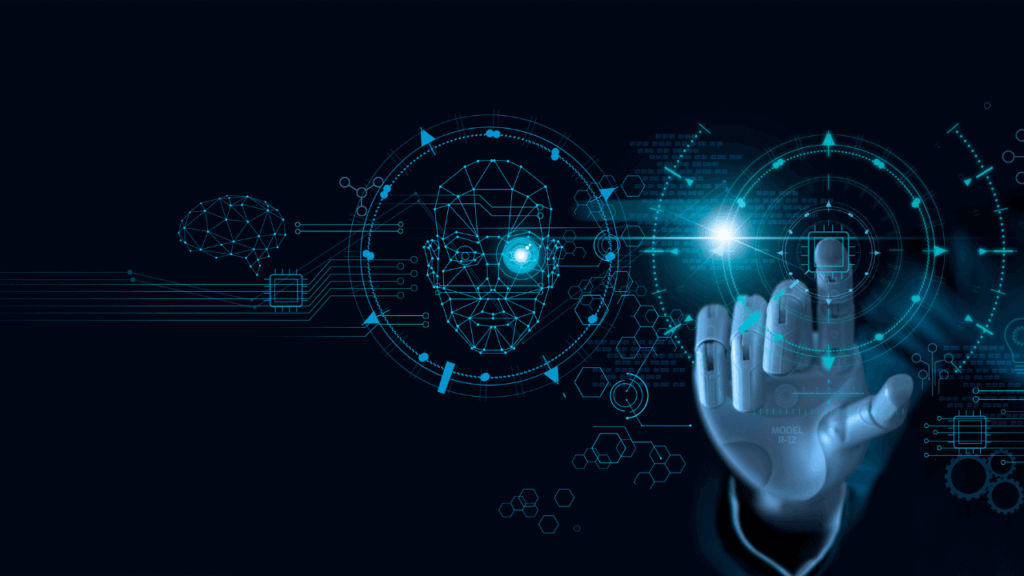The industrial sector is on the brink of a ground-breaking transformation as it advances toward the era of Smart Factories. This shift, driven by cutting-edge developments in the industrial Internet of Things (IIoT), Artificial Intelligence (AI), and automation systems, is redefining how manufacturing operates. With an emphasis on efficiency, flexibility and sustainability, Smart Factories are setting a new standard for industrial innovation.
This article explores the key trends, benefits, challenges and future prospects shaping this revolution.

The Heart of Smart Factories with IoT and AI
IoT and AI form the foundation of Smart Factory operations. IoT devices enable seamless connectivity, allowing machines, sensors and systems to share real-time operational data. AI processes this data, identifying patterns, optimizing workflows and enabling predictive maintenance.
- How It Works: IoT facilitates machine-to-machine communication, creating an interconnected ecosystem within the factory. AI then analyses this data, enabling real-time quality control, adaptive production systems and the ability to predict equipment failures before they occur.
- The Impact: Research from the International Journal on Interactive Design and Manufacturing shows that combining IoT and AI can reduce unplanned downtime by up to 30% while significantly extending machinery lifespan [i]. This combination enhances operational efficiency and aligns with sustainable production practices.
- Industry Insight: “The synergy of AI and IoT is not just about the connectivity but about enabling intelligent decision-making that enhances operational efficiency,” says Dr. Mark Johnson, a leading automation expert at MIT. This perspective highlights the potential for the transformation of these technologies in revolutionizing manufacturing processes.
Embracing Digital Twins for Operational Excellence.
Digital twins, virtual replicas of physical systems, are becoming a cornerstone of Smart Factories. These virtual models empower manufacturers to monitor and optimize performance in real-time, simulate scenarios and predict maintenance needs without disrupting operations.
- Real-World Use: Digital twins enable companies to model production processes, test changes virtually and implement improvements confidently. This minimizes errors, reduces downtime and ensures smoother operations on the factory floor.
- The Data: According to the Automaton 2024 Report [ii], digital twin adoption rates are expected to grow by over 40% annually, making them an essential tool for future manufacturing. This rapid adoption underscores their role in driving innovation and operational efficiency.
- Key Benefit: Manufacturing using digital twins can proactively address potential issues, reducing production downtime by up to 20% and lowering costs by 15%. This capability makes them indispensable for forward-thinking organizations.
Collaborative Robots and The Future of Workforce Synergy
Collaborative robots, or cobots, are revolutionizing industrial automation by working alongside human operators. Unlike traditional industrial robots that require isolated workspaces, cobots are designed to be flexible, safe and easily programmable, making them highly adaptable to various manufacturing environments.
- Why Cobots? Cobots excel in handling repetitive tasks that demand precision, allowing human workers to focus on more complex and strategic activities. This combination of robotic efficiency and human ingenuity leads to enhanced productivity and innovation. Additionally, their affordability and user-friendly programming make cobots particularly appealing for small and medium-sized enterprises (SMEs), democratizing access to advanced automation technologies.
- Industry Trends: As industries grapple with labor shortages, cobots are becoming an essential solution. According to the Financial Times, cobots are being rapidly adopted across the UK to address skills gaps in manufacturing [iii]. This trend is expected to expand globally as industries seek ways to boost productivity while navigating ongoing labor challenges.
- The Numbers: By 2025, the global cobot market is projected to reach $12 billion, growing at a compound annual growth rate (CAGR) of 15 percent, according to Allied Market Research. This growth underscores the critical role cobots are playing in shaping the future of industrial automation.
Sustainability at the Core of Smart Manufacturing
As industries face growing pressure to operate more sustainably, Smart Factories are leveraging cutting-edge technologies to minimize their environmental footprint. AI and IoT are at the forefront of this shift, monitoring energy consumption, optimizing resource utilization and reducing waste.
- Case in Point: AI-powered systems analyze energy usage patterns, recommending strategies that can reduce energy consumption by 20%. IoT-enabled sensors identify inefficiencies in production processes, allowing immediate corrective action. The International Journal of Production Research emphasizes how these technologies enable manufacturers to balance environmental and operational goals.
- The Bigger Picture: Sustainability has evolved from being a corporate responsibility to becoming a critical business imperative. Vention, a leader in industrial automation, emphasizes that integrating AI into sustainable manufacturing practices not only reduces environmental impact but also enhances profitability [iv]. This dual benefit demonstrates how sustainability can align with long-term business success.
Key Obstacles in the Path to Industrial Automation
Despite its many benefits, industrial comes with challenges that manufacturers must address to ensure successful adoption:
1. Cybersecurity Risks
Increased connectivity introduces vulnerabilities to cyber threats. According to Deloitte, 48% of manufacturers cite cybersecurity as the top barrier to the adoption of Smart Factory technologies [v].
Investing in robust security measures is essential to safeguarding connected systems.
2. Workforce Reskilling
As automation replaces manual tasks, reskilling workers to manage and operate new technologies is critical.
Collaboration with educational institutions and investments in training programs will be key to building a skilled workforce.
3. Legacy Systems Integration
Many factories rely on outdated equipment that isn’t compatible with modern automation solutions.
Bridging this gap requires technical expertise, financial investment and a phased integration strategy to ensure seamless operations.

Trends in Industrial Automation and How it is Shaping Tomorrow
The Smart Factory Resolution is rapidly transforming the industrial sector, with IIoT, AI and cobots paving the way for a new era of manufacturing.
As technology continues to evolve, the integration of digital twins, sustainable practices and enhanced connectivity will shape the factories of tomorrow, enabling greater adaptability and efficiency.
- Growth Potential: According to Fortune Business Insights, the global industrial automation market is projected to reach $295.09 billion by 2029, growing at an impressive compound annual growth rate (CAGR) of 9.8 percent [vi]. This growth underscores the increasing demand for smart technologies as industries adapt to changing market dynamics and embrace automation.
Final Thoughts
Dr. Anne Carterm a manufacturing technology specialist, highlights the broader implications of this transformation: “The success of the Smart Factory revolution will depend not just on adopting advances technologies, but on rethinking traditional processes to create a fully connected and adaptive ecosystem,”
Her perspective underlines the importance of combining technological innovation with strategic process redesign for long-term success.
Smart factories are no longer a futuristic concept, they’re becoming the industry standard. By embracing these trends and addressing the associated challenges, manufacturers can establish themselves as leaders in an increasingly competitive and dynamic industrial landscape
If you are looking for a role within industrial automation, head over to our job search page and apply now!
Alternatively, if you are looking for some assistance with building your industrial automation team, connect with me on LinkedIn or email me at bradley.wilkins@darwinrecruitment.com
[i] https://ijcat.com/archieve/volume13/issue10/ijcatr13101003.pdf
[ii] https://www.automation.com/en-us/assets/ebooks/automation-2024-9th-industrial-automation-trends
[iv] https://vention.io/blogs/events/what-you-missed-at-demo-day-2024-856
[vi] https://www.fortunebusinessinsights.com/industry-reports/industrial-automation-market-101589





